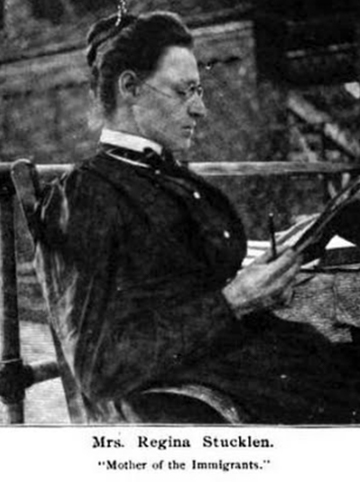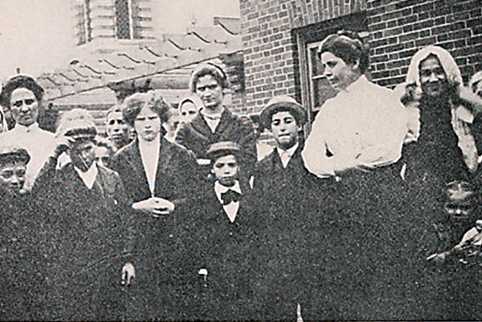Immigration Service Matrons: Female Pioneers in the Federal Workplace

Ainslee's Magazine, 1900. |
In the early years of the Immigration Service, 90 percent of its workforce was composed of men; only a small number of female employees worked alongside them. The Immigration Service’s early female workers served as cooks, hospital attendants, charwomen (cleaners), clerks, and matrons. As matrons, women managed domestic and medical arrangements for female immigrants and minors at immigration stations around the country.
Initially, only a few matrons worked at Ellis Island, but by 1922, 25 matrons served at the station. They cared for immigrant women and children awaiting inspection as well as those detained at Ellis Island. Their other duties included interviewing detained immigrants; explaining the admissions and appeals processes; and helping unaccompanied immigrant women locate relatives or friends in the United States.
The matrons also carried out arrest warrants and escorted deportees to immigration stations. This often required them to travel to hospitals, institutions, and penitentiaries, endeavors that sometimes put them in dangerous situations. They even officiated weddings for immigrants at Ellis Island.

Ellis Island rooftop garden, 1913. Popular Science. |
Ellis Island matron Maud Mosher wrote a short unpublished memoir about her experience working in the Boarding Division starting in 1903. Mosher took great pride in her profession and often found satisfaction from assisting immigrants. When recalling the trials and joys of her work, she said, “The tears were always so near my eyes I just had to keep on smiling to keep them from flowing.”
Ellis Island’s busiest years occurred during the Progressive Era, a period when women created new paths for themselves in the workforce, including in the federal government. In doing so, many women focused on distinctly “feminine” disciplines, such as motherhood and child care, and they worked to professionalize these fields. After describing the matrons’ many duties, Mosher wrote that a matron’s “womanly sympathy, skill and common sense enable her to learn the needs of the individual cases.”
As part of the larger generation of Progressive Era female professionals, Immigration Service matrons like Mosher demonstrated the many ways that women could contribute to the federal workforce.
To learn more about Ellis Island’s employees, watch the USCIS History Office and Library’s documentary film, “USCIS and the Legacy of Ellis Island.”
